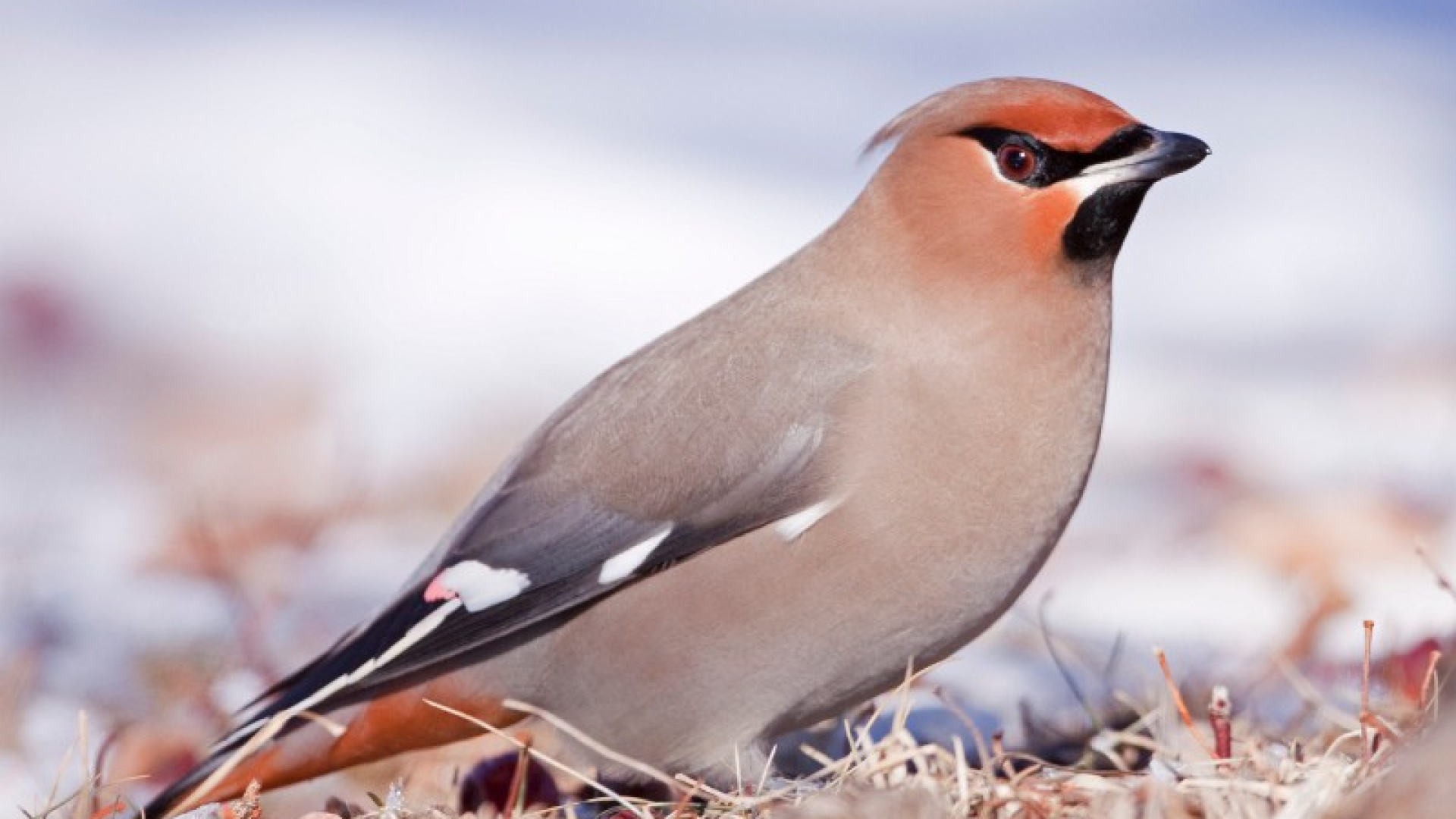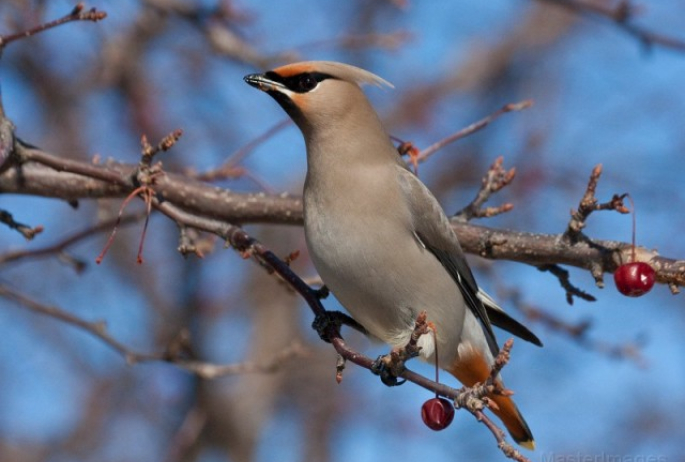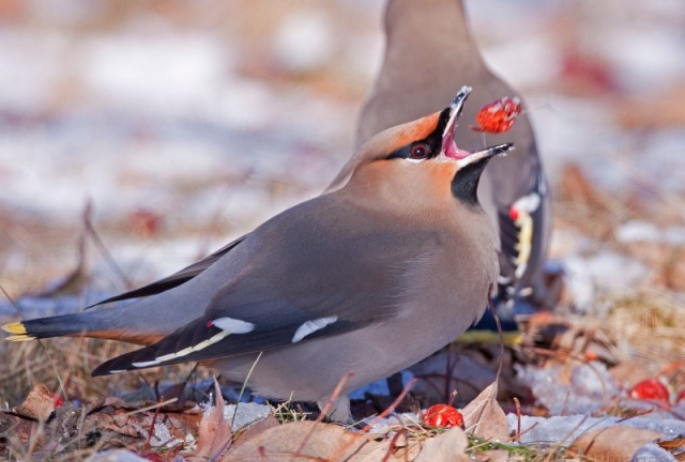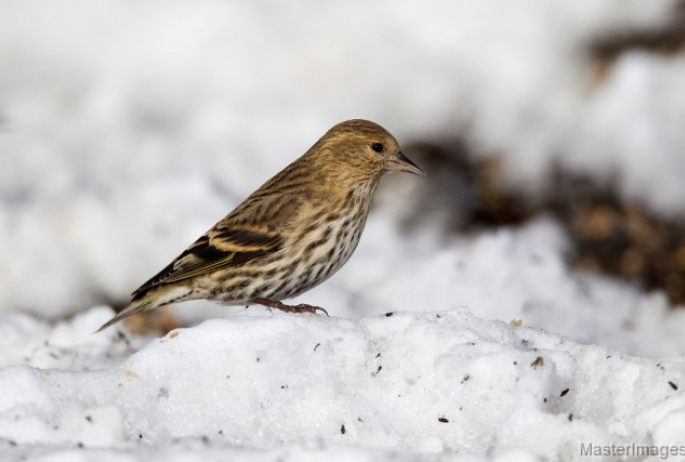Flocks of Feeding Birds
Winter birding across the region often involves searching for specialty birds which migrate to our area or linger during the cold months. With our warblers, flycatchers, vireos, and others long gone, this usually means we are looking for flocks of birds – many of which visit yards and bird feeders to help get them through this lean time of year.
Bohemian Waxwings Have Been Everywhere!
This year has been marked by a huge influx of Bohemian Waxwings descending in flocks upon unsuspecting fruit trees to gobble down this year’s crop of berries. While the more common Cedar Waxwing breeds across the region with some remaining through winter if there is enough food, it is the Bohemian that makes the journey to the region during winter to take in the relative ease of our cold months over the arctic wrath of its northern home.
Bohemians are found across much of northern North America as well as Europe and Asia and their Bohemian name finds its roots in their propensity to travel and wander nomadically in search of food. In fact, evidence suggests that they don’t even defend true breeding territories and they have a poorly developed song as a result. The function of song, after all, is to help birds find mates and defend territories.
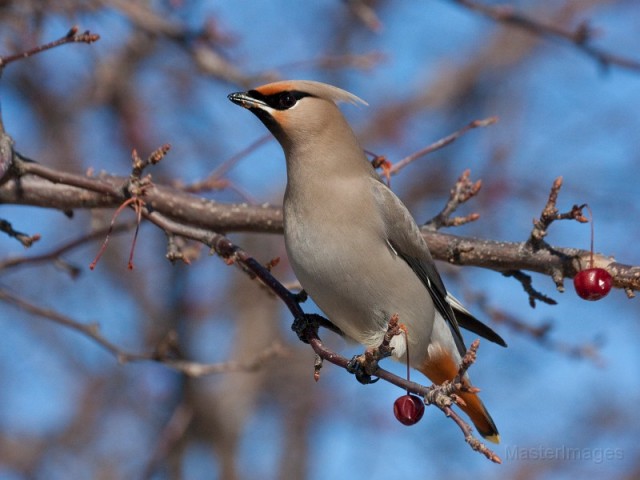
While during the summer they can be found hawking insects much like our flycatchers or their Cedar Waxwing cousins, we find Bohemians tossing back copious amounts of berries during the winter when there are no insects to be found. Since many of the most productive trees and shrubs in the region are ornamental species (such as ornamental crabapples), Bohemians are often more easily found in towns than they can be in wild landscapes. Any fruiting tree will do, and once they move in they often strip the twigs clean and move on to the next feeding location. This means when you find Bohemians in a location, they may only be there for a couple days.
While their seemingly nomadic existence may create short-lived opportunities to see and photograph them, birders will find that Bohemian Waxwings are often quite approachable. This is helped by the fact that many ornamental trees are small and shrubby and the waxwings feed fairly low while other members of their flock sit high – trilling from neighboring trees.
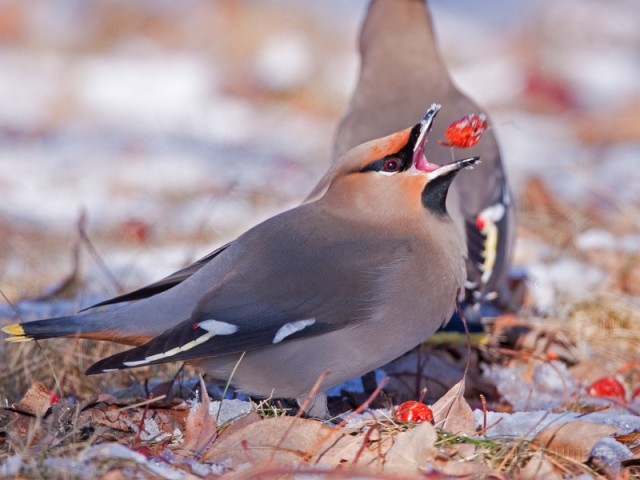
Over the past several weeks Bohemians have been found seemingly everywhere in the Saranac Lake and Lake Placid area, and I have found them – among other places - along Cummings Road in Lake Placid, flying over the Olympic oval, at the Pizza Hut in Saranac Lake, at the public library in Saranac Lake, across the street from Harrietstown Hall, at the visitors center in Saranac Lake, and most recently along Kiwassa Road in Saranac Lake. They have been seen routinely in the center of Keene where they have been joined by lingering Cedar Waxwings, and every town in the Champlain Valley from Willsboro to Port Henry to Plattsburgh seems to have them. It has been a great year for Bohemians in our region.
Wintering Finches Too!
And for those who are interested in wintering flocks, Bohemians don’t have exclusive claim to our attention this winter. Our entire region has played host to large flocks of American Goldfinches, Purple Finches, and Pine Siskins, all of which chatter and sing at feeders each morning, falling upon my yard and forcing me to fill my feeders regularly with seed. And while not in large flocks, Red Crossbills have likewise been around this winter – most notably in the Central Adirondacks and in the area surrounding Paul Smiths and Rainbow Lake. I have also found them singing at Mt. Van Hoevenberg in Lake Placid while cross-country skiing. And while White-winged Crossbills have proved harder to come by, there are a few around as well – and any birder searching for them should keep their ears open for flyover birds.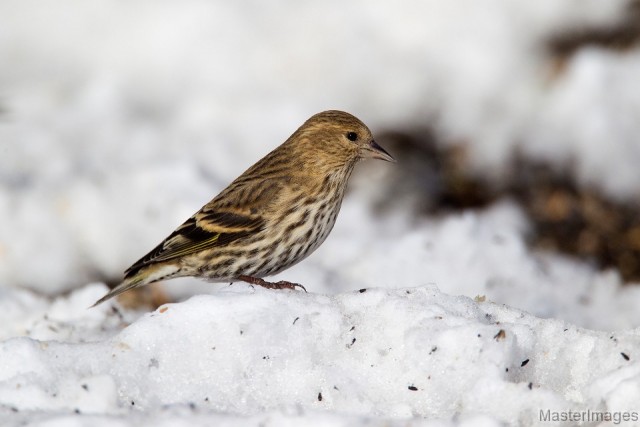
But although February stayed with us for one extra day this year, winter will not be here forever and our Bohemians and many of our finches will be heading north soon. That means interested birders will need to make the trip to find them before they strip their food sources bare and wander on the wind in search of their next meal.
Now is a great time for some winter birding around the Saranac Lake Region. Check out our lodging, dining, and birding pages for more details.
